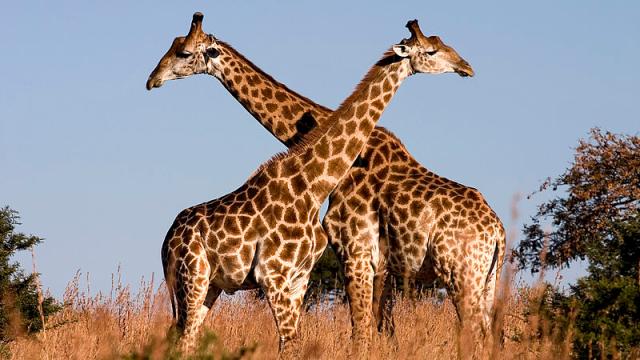It feels like just last week the majestic giraffe finally had its moment in the spotlight. Wait, that was last week. At long last, the world’s tallest land mammals are getting the respect they deserve. Except, because everything we humans love we somehow destroy, giraffes are now dying.
Image: Wikimedia Commons
Over the past 30 years, the number of giraffes on Earth has dropped 38 per cent, from roughly 157,000 individuals in 1985 to 97,500 today, according a new population survey conducted by the International Union for the Conservation of Nature. Based on this depressing find, the IUCN has updated the giraffe’s red list status from “least concern” to “vulnerable”.
“This is a silent extinction,” Julian Fennessy of the Giraffe Conservation Foundation, which helped lead the new population survey, told Gizmodo. “Most people assume giraffes have been just fine.”
Indeed, giraffes have long been overlooked in terms of research and conservation, although that’s starting to change thanks to groups like the GCF and pro-active governments. Over the past five years, there’s been major progress compiling population data on giraffes and decoding their genetics. Based on the latest DNA evidence, a recent scientific paper (also led by Fennessy) calls for reclassifying the long-necked herbivores into four separate species.
If formally adopted by the IUCN, this new classification would overturn the one species, nine subspecies taxonomy that traces back to 18th century biologist Linnaeus. Biologists are still arguing about it. But however the scientific debate shakes out, it’s a poignant example of just how misunderstood giraffes are.
The IUCN identified a number of factors responsible for the rapid decline, including many of the usual suspects: Illegal hunting, habitat loss and degradation and civil unrest. All of these issues relate to a growing human population, and as our numbers continue to rise, we can expect the giraffe’s problems to get worse.
There is, however, a reason to be optimistic. Three of the currently-recognised subspecies — the southern giraffe of South Africa, the West African giraffe of Niger and the Rothschild’s giraffe of Eastern Africa — have seen their numbers rise since 1985 due to better management, pro-active conservation policies and, in some places, a booming ecotourism industry.
Fennessy hopes that giraffe conservation success stories, along with the latest dire status report from the IUCN, prompt more national and international action to safeguard these amazing animals.
“There are some national strategies,” Fennessy said. “But we all need to come together, come up with priorities, and get an Africa-wide framework in place.”
